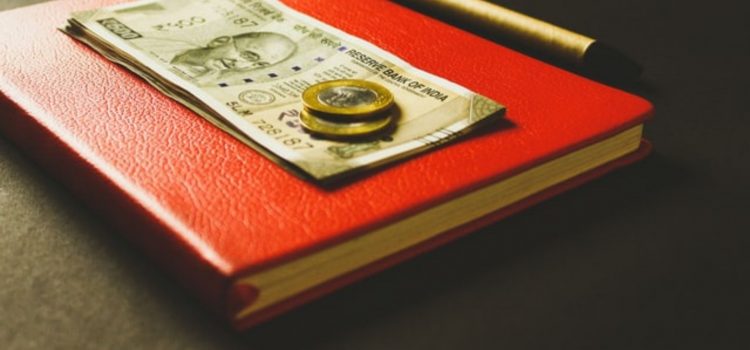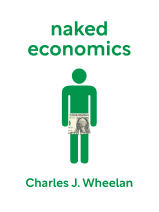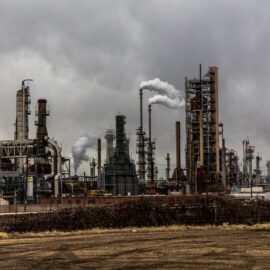

This article is an excerpt from the Shortform book guide to "Naked Economics" by Charles J. Wheelan. Shortform has the world's best summaries and analyses of books you should be reading.
Like this article? Sign up for a free trial here .
What is Charles Wheelan’s Naked Economics about? What are the key takeaways?
In Naked Economics, bestselling author Charles Wheelan strips away the complexity from some of the most powerful theories in economics, allowing readers with little or no background in the subject to understand many of the field’s most fundamental concepts. He skips over the more technical, mathematics-based aspects of the discipline and concentrates instead on the logical pieces of how and why people behave in certain ways, how markets function, and how governments can design incentive systems that encourage healthy economies.
Below is a brief overview of the key concepts from Naked Economics: Undressing the Dismal Science.
Naked Economics: Overview
Economics is the study of how we allocate resources—not only tangible resources like food, clothing, and money, but also intangibles like time, effort, and knowledge. To understand this process, economists begin by examining incentives: the driving forces behind our decisions. By understanding how we respond to incentives and the psychological instincts that steer us, we can better understand how market forces work and how governments and firms can use incentives to foster a healthy economy.
The following is a quick summary of the key concepts discussed in Naked Economics: Undressing the Dismal Science by Charles Wheelan. We’ll structure our discussions by walking through different aspects of markets one by one:
- We’ll first explore what a market is and how a market works.
- We’ll then go into more depth about how incentives drive markets and how governments can influence markets as well.
- Then we’ll discuss how financial markets work.
- We’ll also look at how economies of differing countries are measured and compared, how recessions happen, and how governments can work with financial markets to manage recessions.
- We’ll finish by exploring international markets by looking at how currencies work and how markets can pull developing countries out of poverty.
Introduction to Markets
We’ll start by exploring some basic economic concepts:
- Markets and what they are
- Prices, and how they reflect supply and demand
- Incentives, and how people respond to them.
Markets
A market is a collection of billions of separate transactions that form a complex economy in which people can earn and spend money to fund their lives. A capitalist market allocates resources by matching supply with demand, thereby directing resources to where they will be most productive. In doing so, a market improves society by increasing opportunities for people to make income and increasing the variety of goods available to consumers.
Prices Reflect Supply and Demand
When a sale is made, firms and individuals connect and maximize their utility against each other. “Utility” can be thought of as happiness, and maximizing it means making yourself as well-off as possible. In a sale, firms look to make as much money as possible, while individuals look to satisfy a need or desire by purchasing something.
In a capitalist economy, meeting points between sellers and buyers are regulated by prices, which reflect the supply and demand for any item on sale: how much of something is available and how much people want to buy it.
When sellers and buyers settle on a price that reflects a balance between supply and demand, they’ve set the market price for that particular thing, where its price encourages enough demand from buyers to generate an acceptable amount of profit for the seller. There is often a complex process involved in arriving at that price: In general, when prices increase, fewer people buy that thing, so the demand drops relative to its supply. If demand drops enough, vendors respond by lowering the price. But when the price drops, people start buying that thing again, which increases demand, which in turn increases prices again.
People Respond to Incentives
Self-interested incentives power the economy. Firms produce goods in order to make money for themselves, and people work to earn an income for themselves. In general, such incentives help the economy work well—in the pursuit of personal income, people and firms produce goods and services that benefit others. However, there are situations where incentives can cause problems:
- The principal-agent problem: When a company (a principal) employs someone (an agent), they often have differing motivations. The principal wants to make money off their customers, but the agent might want to make money off the company (over and above a salary). For example, CEOs are motivated by personal rewards to do things like engineer corporate mergers, which lead to fame and status for the CEO, but very often don’t add value to the companies involved.
- Communal resources: Communal resources are finite resources of which everyone uses a piece, but no one in particular owns—such as fish in the ocean. Often, in markets based on communal resources, people have incentives to cheat the system and acquire as much of the resource as they can before others do. This usually leads to the resource being depleted, which harms everyone. Typically, the only solution to problems with communal markets is governmental regulation ensuring that no one party is able to take more than their fair share.
- Poorly designed regulations: If lawmakers try to encourage good behavior through regulations, they can worsen the initial problems if the regulations don’t properly account for how people will respond to incentives. For example, a law intended to reduce the amount of smog in Mexico City imposed restrictions on which cars could drive on which days, tracked through license plates. In response, instead of driving less, people simply bought second cars with different license plates, resulting in more cars on the roads. Lawmakers can prevent this kind of regulation-skirting by imposing laws with broad scopes that are harder to evade—such as fees that all cars have to pay within a city center, regardless of their license plates.
Government’s Role in Markets
A government makes a capitalist market possible. Though many people, including many politicians, talk about how much better the market could operate if there were little or no government around, the fact is, countries without strong governments have almost non-existent markets in which it’s difficult to conduct even simple transactions. A government provides a number of essential things that allow for a functioning economy:
- Laws: Without a set of rules that everyone agrees to, a market can’t operate smoothly or at all. Laws and regulations allow people to confidently do business with complete strangers, enabling you to give your money to a bank teller and feel confident you’ll see it again, or to send a payment to someone on the other side of the country and know that you’ll receive the, say, necklace you ordered.
- Property rights: A government protects you against someone stealing the fruits of your labor—things you’ve paid for or created, like your car or a crop of wheat. Property rights also protect ideas through copyright and patent laws.
- Public goods: A government builds and maintains goods that everyone benefits from but no one private person or firm would pay for, such as roads, a police force, and the military.
- Social programs: A government prevents a society from devolving into a fully polarized structure in which some people reap all the rewards and others reap none. It does so by redistributing some wealth from the richest to the poorest citizens. This is typically done by taxing people who have excess funds in order to pay for safety-net programs that help people with financial need.
- Management of externalities: Decisions you make affect other people, even when those other people didn’t have a say in your decision—for example, your choice of a large, gas-guzzling car makes other people’s drives a bit more dangerous and emits pollution that increases global warming. Governments pass regulations to limit the damage that one person’s decisions might have on another person’s quality of life—for example, imposing gas taxes to discourage people from buying unnecessarily large cars.
However, if a government sets too many rules or gets too involved in managing an economy’s operations, it can destroy an economy. Too many regulations can stifle growth and increase prices for consumers by requiring firms to go through excessive and often unnecessary steps, such as licensing and paperwork. In general, a government should allow the private sector to provide goods and services whenever possible, only stepping in when the private sector would be unable to provide the same level of quality.
Too much government can also lead to distorted incentives for individuals and firms. For example, high taxes encourage tax evasion, discourage work, and sometimes even foster a black market. All of these actions hinder a properly functioning economy.
Financial Markets
Financial markets are markets specifically designed for moving and managing money. This includes stock and bond markets as well as insurance markets. What other markets do for tangible goods, financial markets do for capital—essentially, they direct it to where it can be the most productive, which, in general, is where it’s earning the highest return.
Financial Markets Serve Four Needs
Financial markets satisfy four basic needs that people have in an economy:
- They allow people to raise money, by either borrowing money (through, for example, banks or venture capitalists) or by selling assets (through the stock or bond market).
- They allow people to store, protect, and profit from excess money. Throughout most of human history, if people had excess assets such as a bountiful harvest or hunt, they’d have to use them immediately or lose them to rot. Today, people can put excess income to use in the financial markets to protect it against theft and inflation.
- They insure people against risk. Through insurance policies and futures contracts—in which commodities traders contract for a future price for their goods—financial markets allow people to protect their capital and assets against loss.
- They allow people to speculate. People can bet on future price movements for just about anything: commodities, corporate earnings, federal interest rates, and so on. Unlike gambling, though, where bets are a zero-sum game (if you win, the house loses and vice versa) and the odds are stacked against the gambler, financial markets like the stock market are a positive-sum system where wealth begets more wealth, and where you can reasonably expect to make a living if you speculate wisely.
The Health of an Economy
In order to properly evaluate the strength of an economy, economists must first figure out how to measure economies. There are several markers of economic health that they look at, but the primary one is an economy’s gross domestic product, or GDP. GDP summarizes the value of all the goods and services an economy produces. It’s the number that people generally refer to when they talk about a country’s growth: If you say the U.S. grew 3 percent this year, what you mean is that the U.S. produced 3 percent more goods and services this year than it did last year.
In addition to GDP, there are some other numbers that economists often refer to in order to judge how an economy is faring. These include:
- Unemployment rate: This number measures the percentage of people who don’t have a job but are looking for one. In general, a lower unemployment rate indicates a stronger economy, because there are plenty of jobs to go around. However, a too-low unemployment rate indicates a lack of skilled workers, which can hold back an economy’s growth.
- Poverty rate: This number measures the percentage of a population living below a certain level of income. A high poverty rate typically indicates a poorly run economy.
- Gini coefficient: This number uses a scale of zero to 100 to measure income inequality. A score of zero indicates total equality, where every worker earns the same amount. A score of 100 indicates total inequality, where one worker earns all the income. By this measure, America has grown more unequal over time: In 1950, the country scored 37.9, while in 2007, it scored 45. Economies that are more equal tend to have longer-term stability.
How Do Recessions Happen?
Recessions are periods of time during which an economy’s GDP shrinks. They’re generally caused by a shock to the system—something unexpected and bad happening. Shocks might be the bursting of stock market or real estate bubbles (when exorbitant price increases are followed by sudden and devastating losses), a steep rise in oil prices, or a combination of such causes.
Because all parts of modern markets are interconnected, the failure of one part of the economy can quickly cause other parts to fail as well. For example, if your income suddenly drops because of a stock market correction, you will respond by spending less money. Your decreased spending makes other people’s income decrease, who then respond by also spending less money, which spreads the pain throughout more and more sectors of the market.
When this kind of slowdown reaches banks, the entire economy can quickly freeze up; when banks stop lending money because they fear people caught in a downward economic cycle can’t pay it back, businesses can’t operate. This is what happened during the financial crisis that began in 2007. Homeowners took on more debt than they could finance in order to pay for new homes, fueling a property bubble. When property prices fell, people unable to honor their loans found they couldn’t sell their homes for enough money to cover their outstanding mortgages, and the resulting wave of foreclosures devastated investment banks. When Lehman Brothers, a major investment bank, declared bankruptcy, the global financial market froze as panicked banks stopped lending people money.
Countering Recessions
To counter recessions, governments can change their fiscal policies or their monetary policies to encourage businesses to begin investing and consumers to start spending, so that the economy becomes self-sustaining again.
Fiscal policies: A government can encourage spending by injecting money into the economy, either by cutting taxes or by creating stimulus programs that put money directly into the hands of consumers and businesses.
Monetary policies: A government controls the supply of money in an economy by increasing or decreasing short-term interest rates. Cutting interest rates allows consumers to buy more things and allows firms to invest. Raising interest rates puts a brake on the economy by raising the cost of money itself, making it harder for individuals and businesses to borrow capital.
A government can decrease interest rates to heat up an economy, but it must be careful that it doesn’t go too far and cause inflation—a continuous rise in prices. When interest rates are low, people borrow more money, and with more money running through an economy, prices for goods typically rise.
If, however, a government errs on the opposite end of the spectrum with interest rates that are too high, it can tip an economy into recession; when interest rates are high, borrowing money becomes expensive and people and firms stop taking out loans. Consequently, individuals stop spending money on big-ticket items, like homes, education, or home improvement projects, and businesses invest less and hire less, which decreases the number of jobs available.
International Economics
The concepts we’ve reviewed so far relate to how an economy functions in general, and typically within the borders of one particular country. We’ll now look at how people, firms, and governments of different countries can interact with each other globally in an international market, buying and selling not only goods and services but also currencies. We’ll then discuss how international trade can benefit standards of living throughout the world.
The international market operates similarly to domestic markets, except on a global scale. The global nature of the international market adds complexity to business transactions, not only because of the logistics of buying and selling goods and services from far-away regions, but also because different countries have different rules, regulations, taxes, and currencies.
Currencies
A currency is the unit of money a country uses to conduct its business. Different countries have different currencies—for example, the United States has the dollar, Mexico has the peso, and Japan has the yen. Each country also has its own governmental institutions that create and manage its currency.
A physical piece of currency is just a piece of paper or a coin, but it represents an amount of purchasing power that can be used for goods and services. To evaluate a currency’s purchasing power, economists determine how many goods and services it can purchase from a hypothetical “basket of goods” that includes a broad range of things for sale. When purchasing power is compared across countries, economists call it purchasing power parity (PPP). PPP can be an effective way of comparing the strength of different countries’ currencies.
Determining Exchange Rates
People can trade or sell currencies for other currencies. Currencies behave just like any other item that can be traded or sold—their values rise and fall according to the laws of supply and demand. The price at which you can purchase one currency using another currency is called the exchange rate.
Today, most economies have floating exchange rates. This means that currencies are traded on foreign exchange markets (similar to stock markets but for currencies) and their values fluctuate against each other based on what traders are willing to pay for them, instead of against something tangible like gold. So, if a firm wants to, for example, change its dollars into yen, it would use the foreign exchange market to trade its dollars for yen at a price set by supply and demand of each currency in the market.
Strong and Weak Currencies
Currencies can strengthen or weaken against each other, reflecting which one is more valuable to traders at any given moment. For example, if last week, one dollar equaled one pound, but this week, two dollars equals one pound, then the dollar has weakened against the pound: Each dollar can buy fewer pounds (in this case, one dollar would only be able to buy half a pound). If, however, this week one dollar equals two pounds, then the dollar has strengthened: Each dollar can buy more pounds.
The strength or weakness of a country’s currency has direct effects on importers and exporters:
- A weak currency hurts importers and benefits exporters: If the dollar is weak and can buy fewer pounds, then Americans can buy fewer British products, priced in pounds (from American soil, British products are imports). However, British pounds can buy more American goods priced in dollars, so American exports benefit.
- A strong currency works in the opposite direction, helping importers and hurting exporters. If the dollar is strong and can buy more British pounds, then Americans can buy more British goods imported into America. Further, if British pounds can’t buy as many American dollars, then British people can buy fewer American goods exported from America.
Overall, a currency responds to supply-and-demand market forces: A country with a healthy economy will often have a strong currency, since a strong economy attracts investors who purchase that country’s currency in order to conduct business in and with the country. This increases demand for the currency, driving up its price.
Currencies also respond to governmental policies, such as interest rates. A government might adjust the strength of its currency in order to manufacture some short-term benefits, such as propping up their exporters by purposefully weakening their currency.
International Trade
To a large extent, the world is economically interdependent. Exports have increased from 8 percent of global GDP in 1950 to 25 percent today, meaning that countries are trading many more of their goods and services abroad. The increase in international trade is often called globalization. Overall, international trade makes all the countries involved richer and raises their standards of living, be they rich or poor to start with.
Trade Helps Poor Countries
International trade allows poor countries to escape poverty. In fact, for a poor country to become a rich country, it must engage in international trade; there has never been a country in modern history that developed without doing so.
International trade helps poor countries in several ways:
- Trade gives producers in poor countries access to markets in rich countries, where the majority of the world’s consumers live.
- Trade creates jobs: When firms export goods, they employ people to make those goods. Then, other people find work servicing the first set of people; businesses spring up to supply the exporters, feed their workers, and so on.
- Trade builds human capital: Foreign companies setting up businesses in poor countries bring new technology and training that increase the skill sets of the people they employ. Those skills can never be taken away, and they allow workers to get other jobs elsewhere if needed.
The Danger of Protectionism
Although the benefits to international trade are enormous overall, this isn’t always true on an individual level. Sometimes, people lose their jobs due to economic or technological advances and end up with a permanently lower standard of living. If this happens, people sometimes decide globalization is the source of their problems and rebel against it, demanding protectionist policies to shield themselves from foreign competitive pressures.
When a government institutes protectionist policies, it puts up barriers to trade. These can be in the form of taxes, tariffs, quotas, regulations, or sanctions. These barriers keep foreign goods and services out of a country, thereby protecting the country’s own industries from competition. Domestic firms protected from competition have few incentives to innovate, increase productivity, or lower prices, and consequently, economies with many protectionist policies in place typically grow stagnant and expensive for consumers.

———End of Preview———
Like what you just read? Read the rest of the world's best book summary and analysis of Charles J. Wheelan's "Naked Economics" at Shortform .
Here's what you'll find in our full Naked Economics summary :
- An explanation of economics that anyone can understand
- How governments and firms can use incentives to foster a healthy economy
- How and why people behave in certain ways






